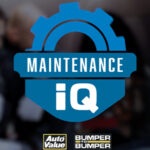Anti-sway bars (aka sway, stabilizer or anti-roll bars) never get the credit they deserve. If anti-sway bars were never invented, the ride and handling of vehicles would be a lot more harsh than it is today. That is because anti-sway bars act as a third spring controlling rolls stiffness of a vehicle.
An anti-sway bar has no effect if both sides simultaneously move in the same direction. If one side is moved up or down, like a dip or bump, half of the rigidity is effected. If the two sides are moving in opposite directions, like when the body sways, the full rigidity of the anti-sway bar is effected.
Cornering or lateral acceleration causes the chassis to roll. The faster the corner, the more the chassis will tend to roll. During a cornering maneuver, entire weight distribution of the vehicle changes. In a right hand corner, the most weight is placed on the left front wheel. The right rear wheel carries the least amount of weight. If the vehicle is breaking in the corner, even more weight is shifted the right front wheel.
Imagine a car without anti-sway bars. The car would experience body roll around corners, but off-road and in a straight line, the tires would maintain better contact with rougher roads at lower speed for better traction. However, at higher speeds, the body movement around corners would negate this effect. If you increased the spring rate, it would reduce body roll but would impact ride comfort.
Now, imagine a car with over-sized anti-sway bars and lower spring rates. The car would go great around corners with very little body movement. But, during braking, the rear-to-front weight transfer would cause nosedive and squat, making it painful to drive over rough or uneven pavement.
The other consideration determining anti-sway bar diameter is the spring rates at all four corners. An engineer may want to improve the ride quality by reducing the spring rates, but this might mean a stiffer roll bar to meet stability requirements. There is a lot of give-and-take to make a vehicle that handles well but is still comfortable.
The weakest points of any anti-sway bar system are the links that connect the bar to the suspension. Designs can vary from vertical links with bushings on both ends to full ball-and-socket joints. Both of these connections can wear over time and fail. Therefore, inspection is critical.
The anti-sway bar can break at the ends or in the middle. This type of failure is more common on smaller diameter rear anti-sway bars. Also, pay attention to the mounting bushings that attach the bar to the frame.
The repair opportunities on active anti-sway bars are increasing as vehicles age.
This video is sponsored by Auto Value and Bumper to Bumper

